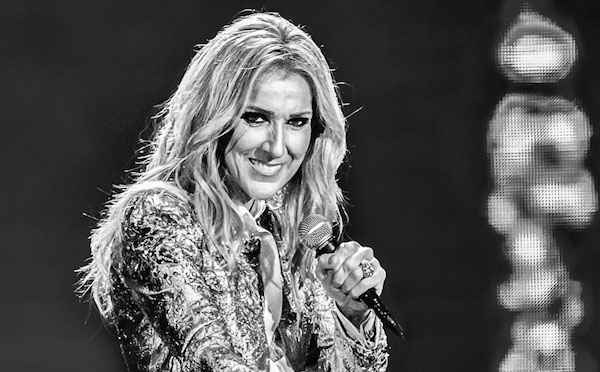Imagine yourself strumming away on your trusty guitar, feeling like a rock god in the making. But hold on a second, have you ever stopped to think about the storytelling power of those magical chord progressions you’re playing? In this article, we’re diving deep into the world of chord progressions and how they have the uncanny ability to unlock the guitar’s narrative power. So grab your pick and let’s unravel the mysteries behind those mesmerizing melodies!
Contents
- 1 The Role of Chord Progressions in Storytelling
- 2 Exploring the Emotional Landscape Through Major and Minor Keys
- 3 Tension and Resolution: The Heartbeat of Musical Narratives
- 4 Modulation as a Tool for Dynamic Storytelling
- 5 Harnessing the Power of Diatonic Progressions for Thematic Development
- 6 Innovative Approaches to Using Chromaticism in Narrative Expansion
- 7 The Impact of Rhythmic Variations in Enhancing Musical Stories
- 8 FAQs
- 9 Rock on, Tune in!
The Role of Chord Progressions in Storytelling
Picture this: a hero embarks on an epic quest to save the world from impending doom. As they journey through treacherous lands, overcome obstacles, and battle fierce creatures, the music playing in the background sets the tone for each scene. But what is it about these melodies that pull us in, captivate our emotions, and keep us on the edge of our seats?
Let’s talk about chord progressions. These seemingly simple sequences of chords are the secret sauce to any good story. Just like a well-crafted plot twist, the right chord progression can evoke a range of emotions, from excitement to suspense to heartbreak.
Think of your favorite movie soundtrack. Chances are, it’s the chord progressions that make those memorable scenes stick with you long after the credits roll. Whether it’s the triumphant resolve of a major key progression or the melancholy longing of a minor key, the right chords can elevate a good story to a cinematic masterpiece.
So next time you find yourself lost in a gripping tale, take a moment to listen closely to the music playing in the background. Pay attention to the chord progressions, and you might just find yourself swept away on a symphonic adventure of your own.

Exploring the Emotional Landscape Through Major and Minor Keys
Have you ever felt like your emotions are as complex and intricate as a piece of music? Well, it turns out that they might be more similar than you think! By , we can uncover the hidden depths of our feelings and experiences.
Major keys are like the bright, shining moments in our lives – the triumphs, the victories, the moments of pure joy. They make us want to dance, to sing, to celebrate the good times. On the other hand, minor keys tap into our darker emotions – the sadness, the heartache, the moments of loss and longing. They make us want to curl up in a ball and cry our eyes out.
But here’s the thing – just like a piece of music can transition seamlessly from major to minor keys and back again, so too can our emotions. Life is a rollercoaster of ups and downs, and sometimes we need to embrace both the major and minor keys to fully appreciate the symphony of our experiences.
So the next time you’re feeling a little out of tune with your emotions, try listening to some music in major and minor keys. Let the melodies guide you through the highs and lows of your emotional landscape, and remember – life is a beautiful, chaotic, unpredictable masterpiece. Embrace the major and minor keys, and dance to the rhythm of your own unique symphony.
Tension and Resolution: The Heartbeat of Musical Narratives
Have you ever noticed how the tension and resolution in a song can make your heart race like you’re in the middle of a thrilling novel? It’s like the rhythmic ebb and flow of musical narratives is the heartbeat of our listening experience.
Think about it – when a song starts off with a slow, haunting melody, you can feel the tension building as the notes linger in the air. It’s like being on the edge of your seat, waiting for the next twist in the plot.
And then, just when you think you can’t take it anymore, the resolution comes in like a breath of fresh air. The tempo picks up, the melody becomes more uplifting, and suddenly you find yourself tapping your foot or nodding your head in time with the beat.
It’s this push and pull, this yin and yang of tension and resolution, that keeps us coming back for more. So next time you’re listening to your favorite song, pay attention to how the musical narrative unfolds – you might just find yourself swept up in a story like no other.

Modulation as a Tool for Dynamic Storytelling
Ever wanted to spice up your storytelling and take your audience on a rollercoaster ride of emotions? Look no further than modulation! Modulation is like the secret weapon in a writer’s arsenal, allowing you to twist and turn your narrative in unexpected ways. Think of it as the literary equivalent of a plot twist, but on steroids!
With modulation, you can ramp up the tension in your story to keep your readers on the edge of their seats. One moment they’re laughing at a character’s silly antics, and the next they’re gasping at a shocking revelation. It’s like playing with their emotions like a puppet master, pulling on their heartstrings and making them beg for more.
Don’t be afraid to get creative with modulation. Mix up your writing styles, throw in a few unexpected twists, and watch as your story comes alive in ways you never thought possible. Who needs a boring, linear narrative when you can use modulation to create a dynamic and engaging masterpiece?
So, the next time you’re stuck in a storytelling rut, remember the power of modulation. Embrace the chaos, twist and turn your narrative like a pretzel, and watch as your audience hangs on your every word. With modulation, the sky’s the limit!

Harnessing the Power of Diatonic Progressions for Thematic Development
So, you want to harness the power of diatonic progressions for thematic development, huh? Well, you’ve come to the right place. Let me tell you, once you start diving into the world of diatonic progressions, there’s no turning back. It’s like a musical rabbit hole that will have you grooving and composing like never before.
First things first, you gotta understand the basics. Diatonic progressions are like the building blocks of music. They’re the chords that make up a key, and when used properly, they can create a sense of cohesion and development in your compositions. Think of them as the secret sauce that ties everything together.
When it comes to using diatonic progressions for thematic development, the possibilities are endless. You can use them to establish a strong melodic motif, create tension and release, or even modulate to different keys for added interest. The key is to experiment and see what works best for your musical vision.
So, grab your favorite instrument, roll up your sleeves, and get ready to unlock the full potential of diatonic progressions. Who knows, you might just stumble upon the next musical masterpiece that will have audiences grooving for years to come. Happy composing!
Innovative Approaches to Using Chromaticism in Narrative Expansion
Chromaticism isn’t just for musicians anymore! It can also be a powerful tool for expanding your narrative. Here are some innovative ways to incorporate chromaticism into your storytelling:
- Use chromaticism to convey complex emotions and character development. Just like those spicy chords in a jazz progression, a touch of chromaticism can add depth and nuance to your characters’ inner worlds.
- Break out of the traditional narrative structure by using chromaticism to create unexpected plot twists. Just like a surprising key change in a symphony, a sudden shift in chromatic elements can keep your readers on their toes.
- Experiment with using chromaticism to create distinctive settings and atmospheres. Whether you’re describing a bustling cityscape or a haunted castle, the use of chromatic elements can transport your readers to new and exciting worlds.
Don’t be afraid to push the boundaries and get creative with your use of chromaticism in narrative expansion. After all, storytelling is an art form – and like a great piece of music, a well-crafted narrative can resonate with your audience on a profound level.
The Impact of Rhythmic Variations in Enhancing Musical Stories
When it comes to music, the rhythm is like the secret sauce that enhances the flavor of a dish. Rhythmic variations can completely transform a song, adding depth and emotion to the musical story being told. From unexpected tempo changes to syncopated beats, these variations keep the listener on their toes and make the journey through a song all the more exciting.
One of the most powerful ways that rhythmic variations enhance musical stories is by creating tension and release. By playing with the expected patterns and throwing in some unexpected twists, musicians can build up anticipation in the listener, only to release it all in a satisfying resolution. It’s like the musical equivalent of a good plot twist in a movie – except with more cowbell.
Another way that rhythmic variations can enrich a musical story is by creating contrast. By changing up the beat or introducing new rhythms, musicians can highlight different sections of a song and keep things interesting. It’s like adding a pop of color to a black-and-white photograph – suddenly, everything pops and comes to life in a whole new way.
So, the next time you find yourself bopping along to your favorite tune, take a moment to appreciate the rhythmic variations that are driving the story forward. They may just be the secret ingredient that makes that song so incredibly catchy and unforgettable. And remember: it’s all about that bass, no treble!
FAQs
Why are chord progressions so important in telling a story through guitar music?
Well, let me put it this way - chord progressions are like the words in a sentence. They help to create the structure and flow of a song, guiding the listener through the emotional journey you’re trying to convey.
How can I use chord progressions to evoke different emotions in my music?
Ah, the age-old question! It all comes down to the magic of music theory. By understanding things like major chords for happy vibes and minor chords for gloomy feels, you can start weaving a tapestry of emotions through your guitar playing.
Can I get away with using the same chord progression over and over again?
Sure, if you want your audience to think they’re stuck in a Groundhog Day loop! While repetition can be a powerful tool, mixing up your chord progressions keeps things fresh and exciting, like adding a pinch of spice to your musical stew.
How do I know which chord progressions work well together?
Think of it like a delicious recipe - some ingredients just naturally complement each other. Experiment with traditional progressions like the I-IV-V in different keys, or throw caution to the wind and try out some unexpected combinations. Who knows, you might stumble upon your own secret sauce!
Any tips for incorporating storytelling techniques into my chord progressions?
Absolutely! Treat your chords like characters in a novel – give them their own arcs and development. Try building tension by using dissonant chords, or create resolution with a sweet, harmonious cadence. The musical world is your oyster, so don’t be afraid to get creative!
Rock on, Tune in!
So there you have it, folks! By mastering the art of chord progressions on your guitar, you can unleash a whole new world of storytelling through music. So go ahead, strum away and let your guitar do the talking. Who knows, you might just become the next guitar legend weaving tales through your fingertips. Let the chords be your guide and rock on!



